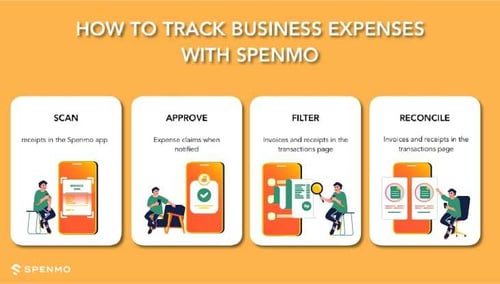
Implies a request for evidence. The phrase was first coined in a 2002 interview the late Whitney Houston had with Diane Sawyer.
Like a contract, the receipt is a testament to monetary compensation received by the seller for an exchange of goods and services provided to the customer/buyer. Receipts make up the backbone of bookkeeping. As a starting point, a business receipt usually encompasses the following:
- Information about the buyer and seller (e.g. Company/customer names, addresses, phone numbers, etc.)
- Goods and/or services provided
- Breakdown of the fee paid (e.g. Prices, discounts, promotional codes or credits, taxes, etc.)
- Total amount paid
- Method(s) of payment employed (e.g. Credit card, cash, etc.)
You don’t want to be keeping receipts just for the sake of preparing for the unlikely event of an investigation during tax season. It is one way to track your employee spending and business overheads. Knowing where your money goes and how they contribute to productivity is a crucial part of managing your business’s financial health and making realistic predictions about future revenue and budgets as your business takes flight.

Several things to note especially for small businesses: Having your receipts at your fingertips is the start to helping you identify business-related income tax deductibles and tax returns. Plus, you raise your chances of securing financing among investors when your business has the reputation of being reliable and transparent to budgeting and financial reporting.
How long should I store records?
According to Singapore’s Inland Revenue Authority of Singapore (IRAS), the company must retain the records within a period of five years from the relevant year of assessment/tax year.
Under circumstances where the company was struck off, dissolved or wounded up, the business owner must ensure that all records are retained for at least five years after the date of dissolution.
How do you organize receipts?
Receipts come in all shapes and forms. Fortunately, IRAS is flexible on your choice to keep the records manually or electronically using a computer (e.g. Microsoft applications, hard drive, note-taking applications like EverNote, cloud storage solutions like Google Drive and Dropbox, etc.) and accounting software.
Here are some tips to get started or/and to maintain your receipt filing system:
If your records are kept in their physical forms:
- Ensure receipts are legible – Make photocopies of receipts printed on thermal paper in case the originals fade over time.
- Create a routine for receipt storage and ensure consistency among team members.
- Invest in office supplies like physical file folders and storage cabinets to stay organized.
- Sort receipts by the (1) type of business expense and (2) in chronological order.
- File them as they come in, instead of waiting till the end of the month.
If your records are kept electronically:
- Ensure you’ve got the proper internal controls in place to safeguard the integrity, completeness and reliability of the electronic records – Once again, keep consistency in the team as to which records should be kept, when and how documents should be filed and stored in a database, or how image captures should be saved.
- OK to go paperless: Across GST and non-GST registered businesses, IRAS ascertains that physical copies need not be kept to substantiate your business transactions for tax purposes if the source documents are kept electronically.
Make Tracking Business Expenses a Breeze with Spenmo
Do you find yourself spending too much time looking for the receipt for a specific expense? To make a case for keeping digital receipts: You certainly can’t do Ctrl+F on paper receipts! With Spenmo, you can conveniently and securely store, organize and retrieve your receipts on all on one platform:

- Using any device, snap and upload your receipt to the Spenmo dashboard or app.
- Finance team receives a notification for to approve an expense claim
- Access documents with ease. Filter invoices and receipts in the transactions page
- Expenses are reconciled on the dashboard ready to be exported into your accounting system.
Many times, entrepreneurs аnd ѕmаll buѕіnеѕѕ оwnеrѕ fіnd it challenging to manage time. You wear every hat in the business, and we get that time is scarce. Ditch the small tasks like manually keying the details of your receipt, and spend time more productively on the core priorities of managing your product or service.
Involve your team in the record-keeping process
In today’s increasingly fast-paced business environment, both MNCs and start-ups alike are looking at a more egalitarian and collaborative team structure. That said, an effective management system seeks to empower and adapt as the needs of the environment and your team change.
With a click, you can easily enable your team members’ access to the dashboard to get real-time visibility into their business spends. As it’s been emphasised earlier that consistency is the key to making you a pro at receipts, no doubt standardized expense reports and automated workflows come in the package when you subscribe with Spenmo. You can be assured to keep your team connected and informed always.
PLUS: Hit two birds with one stone with corporate cards!
- Everyone gets a card – Do away with the claims and make your employees’ lives easier with the instant issuance of physical/virtual cards for their business spends;
- Cards allow you to pre-assign budgets to track spending in real-time in one dashboard.
Find out more here >>>
More articles dealing with effective management of business expenses and receipts: